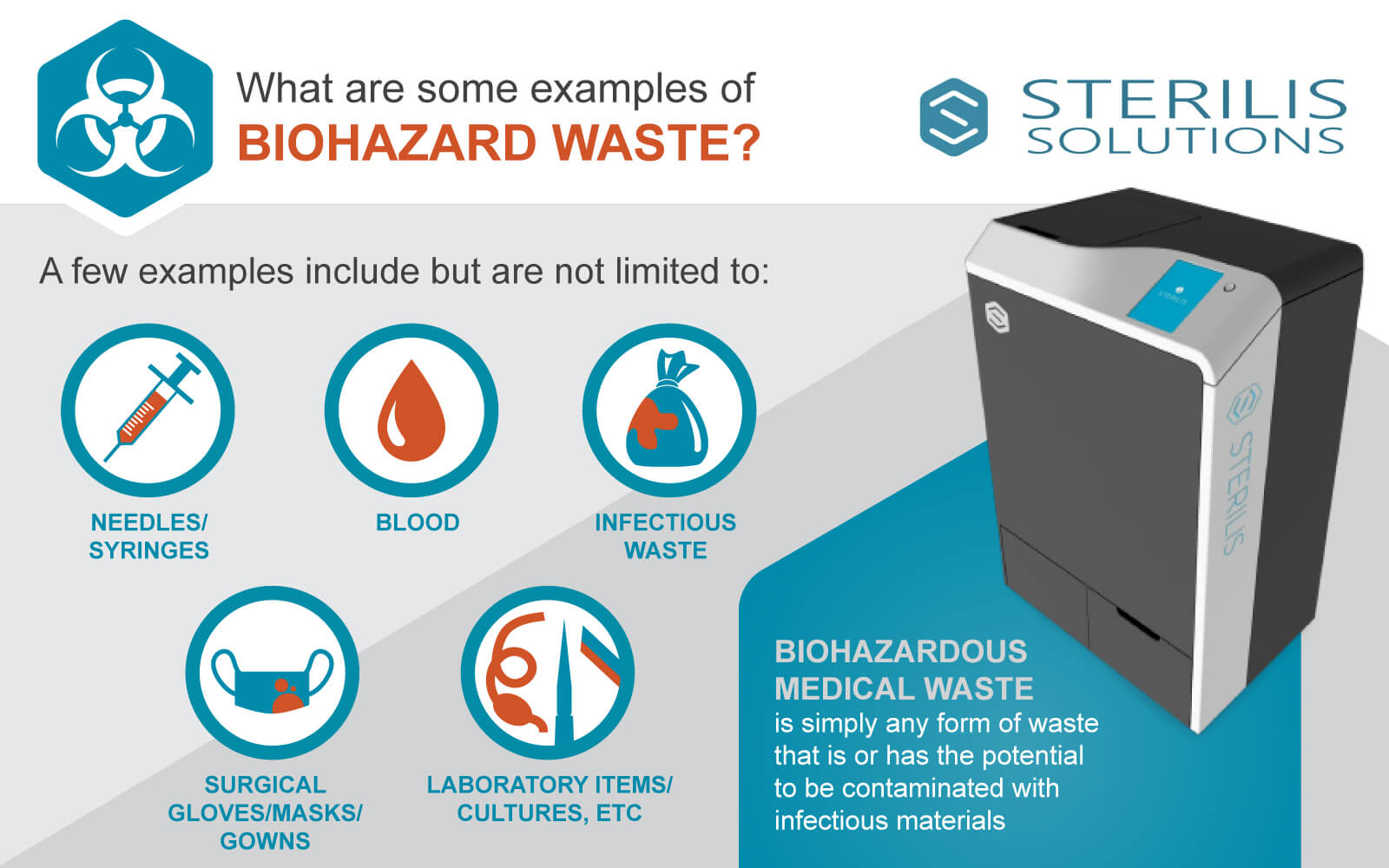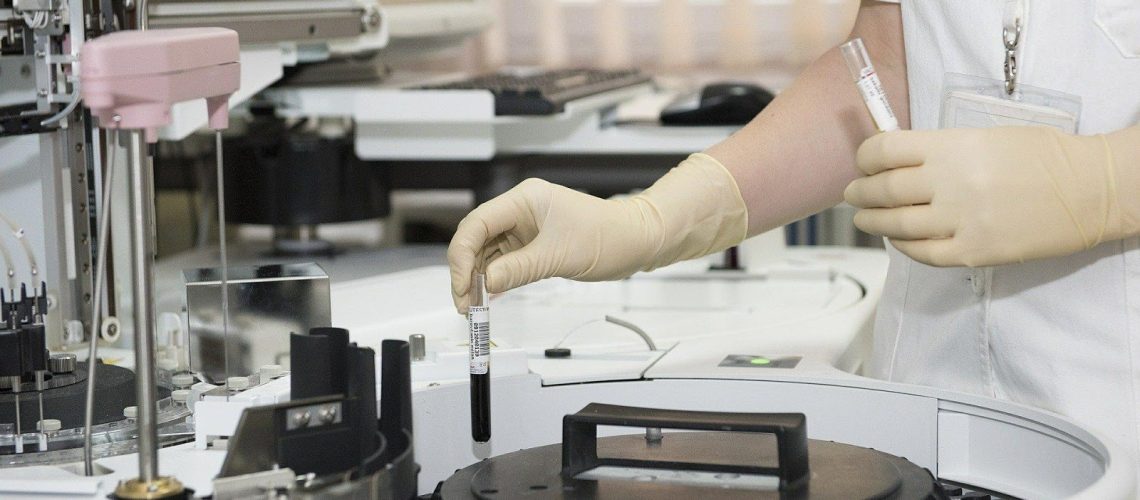Table of Contents
- What are some examples of Biohazard Waste?
- What is Biohazardous Medical Waste?
- Primary Categories of Medical Biohazard Waste
- Disposal of Common Biohazardous Waste
If the term “biohazardous waste” brings up an image in your mind of that little red bin in the doctor’s office that they throw used materials in, then you would be correct. Biohazardous waste is considered to be any and all biologically contaminated waste that could possibly inflict harm to humans, animals, or plants.
What are some examples of Biohazard Waste?
A few examples include but are not limited to:
- Animal or human tissues
- Blood
- Recombinant DNA
- Other bodily fluids
- And known human or wildlife pathogens.
Biohazardous waste is simply any form of waste that is or has the potential to be contaminated with infectious materials.

Related: How To Sterilize Needles
What is Biohazardous Medical Waste?
As the name suggests, biohazardous medical waste is any waste that directly or indirectly comes from the medical field. Facilities that produce this type of waste include dentist offices, hospitals, medical clinics, private doctors, laboratories, etc.
When it comes to the medical field, if in doubt, the safest route is to assume it’s biohazardous. However, there’s a very prominent distinction between biohazardous medical waste and regular medical waste. Often, the term describes all medical waste, but there is a difference.
What if there were a better way to dispose of medical waste? Well, there is.
Primary Categories of Medical Biohazard Waste
Medical biohazard waste describes anything that may infect, contaminate, or cause harm to people or animals. Most countries have their own names and categories for their medical waste, but the terms are typically interchangeable. Here are the basic types of different biohazardous medical waste:
- Anatomical waste – tissues removed during surgery or autopsy.
- Laboratory waste – infectious and noninfectious microorganisms.
- Infectious waste – blood or bodily fluids.
- Solid waste – dressings or bandages.
- Sharps waste – scalpels, needles, etc.
- Animal materials – animal carcasses, tissues, or fluids.
- Drugs – enemas, cytotoxic drugs, etc.
- Pharmaceutical waste – includes the above and extends to unused medication.
- Pathological waste– pathological wastes are unique in that these are typically samples of tissues that are examined in a laboratory setting to understand the nature of the disease or affliction from which a patient suffers.
Medical Biohazard Waste in the United Kingdom
The United Kingdom defines its medical waste into six different categories. Biohazardous or medical waste will fall into one of the following:
- Cytostatic or cytotoxic waste – any drugs or medicines that are cytostatic or cytotoxic, or any item that has contact with a toxic or carcinogenic substance.
- Anatomical waste – any waste from an animal or person, including blood, organs, and body parts.
- Infectious waste – waste that comes from the treatment of patients or is contaminated with infectious bodily fluids.
- Domestic or Municipal waste – any other non-medical waste.
- Medicinal waste – Any medicine, pills, or creams that are not cytostatic or cytotoxic.
- Offensive waste – waste that is not infectious, like nappy and sanitary waste.
Medical Biohazard Waste in the United States of America
The United States also has its specific guidelines to determine what categories particular medical waste falls into. These categories are:
- Radioactive waste – any waste that is generated from radioactive treatments and medical equipment that makes use of nuclear elements.
- General waste – this includes most waste from the medical, household, or office areas.
- Infectious waste – any waste that could give a person an infection, like blood, tissue, or anything that is contaminated with bodily fluids.
- Hazardous waste – dangerous, but not infectious, waste like surgical equipment, sharps, and some chemical waste.
Related: What Happens To Medical Waste?
The WHO’s (World Health Organization) Classifications of Biohazardous Waste
The WHO has also created its guidelines to ensure the proper use and disposal of biohazardous waste. These categories include:
- General waste – any other waste that is deemed as non-hazardous.
- Chemical waste – liquids from things like batteries, machines, and disinfectants.
- Radioactive waste – any waste that potentially contains radioactive materials.
- Genotoxic waste – hazardous waste that is mutagenic, teratogenic, or carcinogenic.
- Pharmaceutical waste – any expired or unused medicine, like pills and creams.
- Pathological waste – tissue, blood, fluids, and body parts from humans or animals.
- Sharps – sharp wasted like scalpels, needles, razors, or broken glass.
- Infectious waste – any waste that is contaminated or infectious in any way.
Disposal of Common Biohazardous Waste
It’s crucial to know and understand the different categories of biohazardous waste so that they can be separated and disposed of adequately to protect patients and healthcare workers. Medical waste has to get separated for a reason, and these guidelines should be strictly followed to prevent the spread of infectious diseases and contamination.
Safety Levels of Biohazardous Waste
According to the CDC, there are four different safety levels for biohazardous materials:
- Level I – waste that poses a minimal threat to people, animals, or the environment.
- Level II – anything that can be spread through contact with contaminated materials and also causes illness in people.
- Level III – pathogens that can become airborne and cause or spread disease.
- Level IV – any pathogens that can trigger life-threatening illnesses that have no treatments available.
Separating Waste Streams for Secure Disposal
Once the biohazardous waste has been sorted properly, it needs to be disposed of safely. The majority of waste typically has to be incinerated to ensure that any trace of infectious materials or pathogens is rendered completely lifeless.
Did you know that there is a better option available for the disposal of regulated medical waste (RMV)? The Sterilis Solutions System is an on-site device that turns RMV into harmless confetti that can be safely thrown away in a regular trash can.
Devices like this can replace incinerators and haulers while remaining a simple way to reduce the risk for patients and healthcare workers. The Sterilis Solutions System eliminates the need for paper reporting, and cost-effectively reduces your regulatory liability.
Related: Sustainability in Healthcare
Conclusion
Knowing what waste is constituted as biohazardous is essential to be able to dispose of it correctly and safely. Be sure to check your federal and local regulations for their exact guidelines on the sorting and disposal of medical waste.
Sure, you can pay someone to come and haul away and incinerate the medical waste from your workplace or take advantage of a safe, simple, and sustainable system. Don’t take any chances with the wellbeing of your patients and staff; make sure that your biohazardous waste is sorted and disposed of properly!
Still have questions about biohazardous waste? We would be happy to answer your questions!
